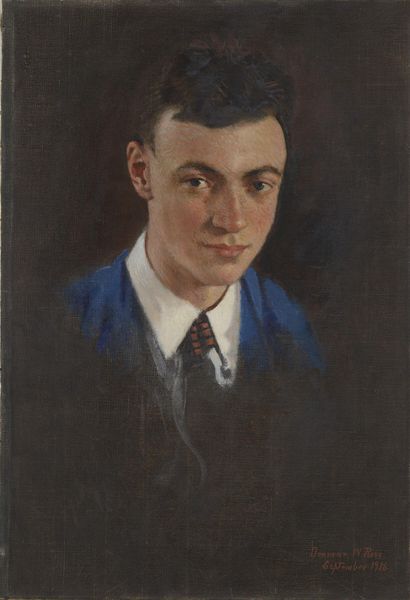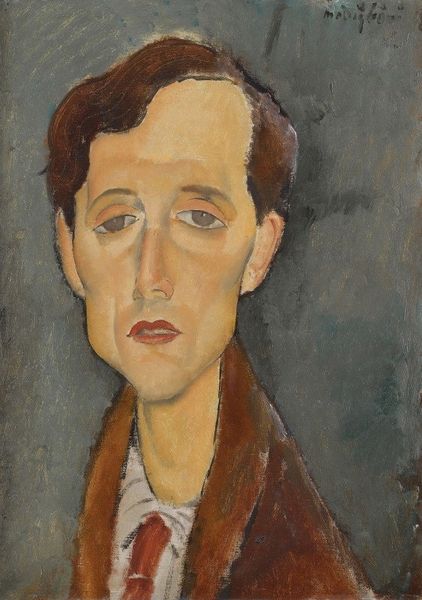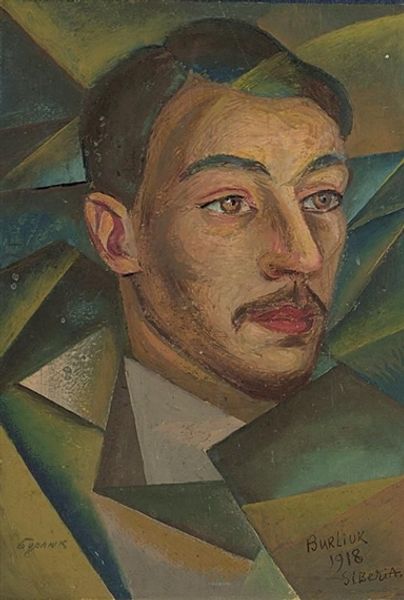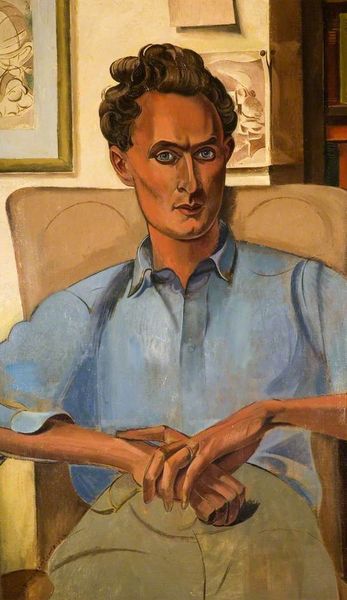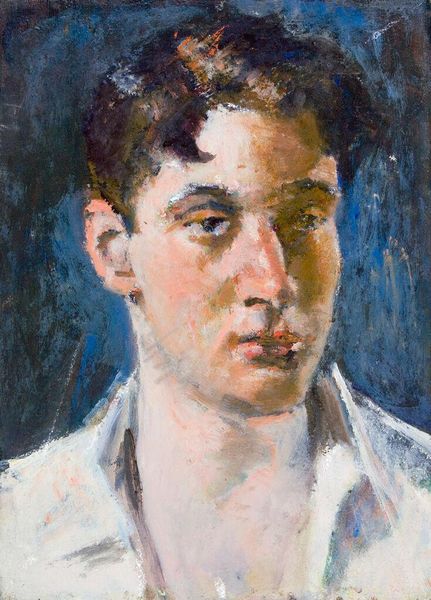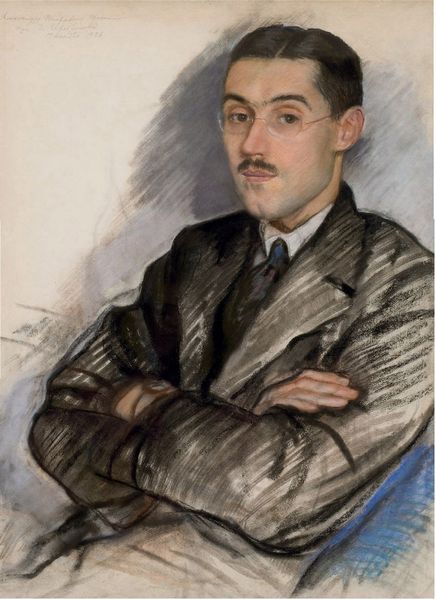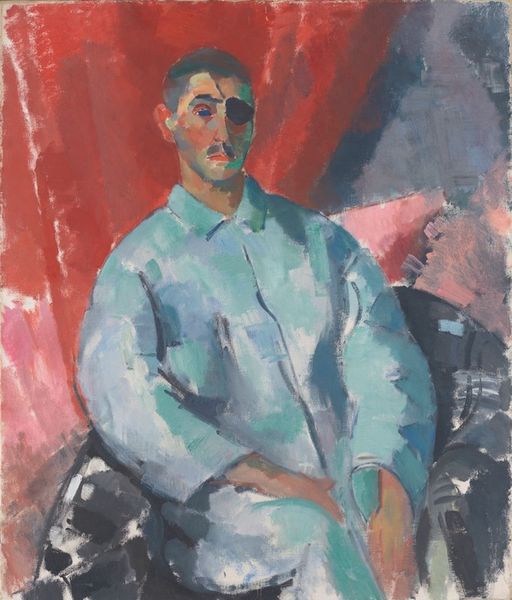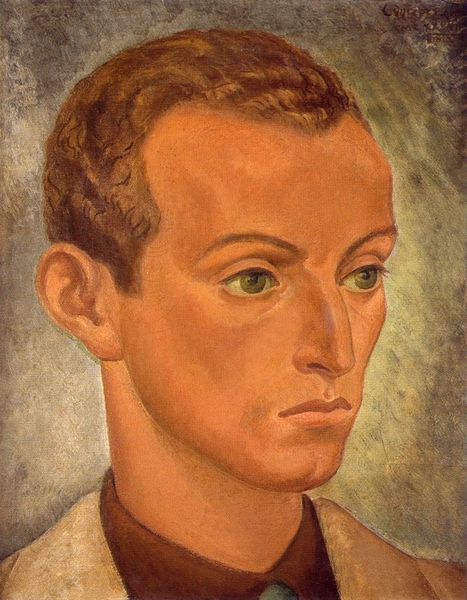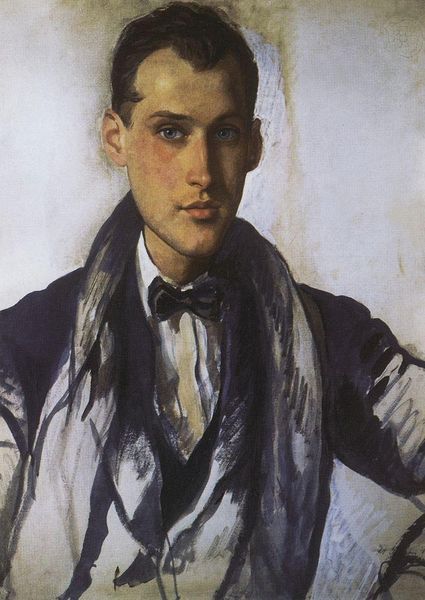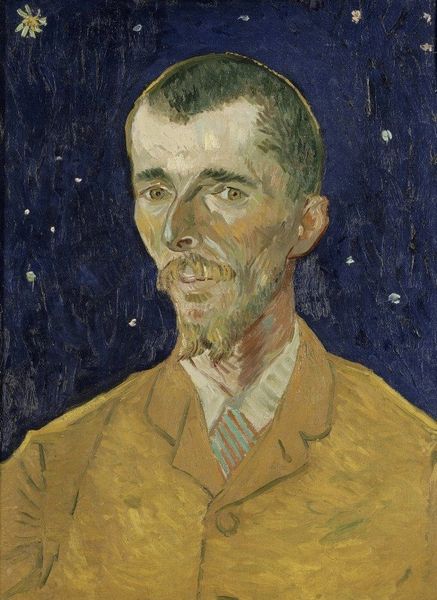
painting, oil-paint
#
self-portrait
#
portrait
#
painting
#
oil-paint
#
modernism
#
realism
Dimensions: 45 x 55 cm
Copyright: James Brooks,Fair Use
Curator: Let’s turn our attention to "Untitled (Self Portrait)" by James Brooks, created in 1932. Brooks worked primarily with oil on canvas to achieve this depiction, and it currently resides here at the Dallas Museum of Art. Editor: The first thing that hits me is a sort of melancholy formality, almost like a snapshot trying to pass as Old World nobility. He’s dressed like he's about to debate existentialism at a yacht club. Curator: It’s interesting that you pick up on melancholy. Portraits, especially self-portraits, often explore the weight of representation. Here, Brooks is capturing himself but also crafting a specific image, very controlled. The stark background enhances this focus. Editor: Absolutely. I think it also gets into how self-portraits act as time capsules. The carefully coiffed hair, the sweater vest – they instantly situate us in the early 30s. What does it say about someone in their own eyes that they chose this representation of themselves in perpetuity? That, to me, is ripe for contemplation. Curator: I agree. Clothes are definitely a social signifier. We can't escape projecting cultural codes onto imagery. He's got those knowing eyes too, very direct gaze, and I can't help wondering whether Brooks consciously intended that hint of aloofness, of intellectual superiority that feels, honestly, very modern. Editor: Right, a modern stoicism. Also, did you notice the very slight asymmetry in his face? It adds a vulnerability to this carefully constructed persona, hinting that this is a man wrestling with internal doubts despite appearing completely self-assured. Curator: Indeed, it also lends it that vital feeling of 'realness', saving it from simply feeling contrived. In that vein, what symbolic connections do you perceive regarding its visual language and its modernist context? Editor: I think it resonates with the modernist emphasis on self-analysis. Artists were constantly dissecting their relationship with the world. Self-portraits become this ultimate arena for exploration, using a slightly detached, observant gaze like we see here. This isn't just about appearances; it's about grappling with existence. Curator: Fascinating perspectives on a fascinating artwork! It is thought-provoking how layers of meaning and insight can surface upon investigation. Editor: Agreed! Makes one see not just a painting, but an actual piece of a life.
Comments
No comments
Be the first to comment and join the conversation on the ultimate creative platform.
